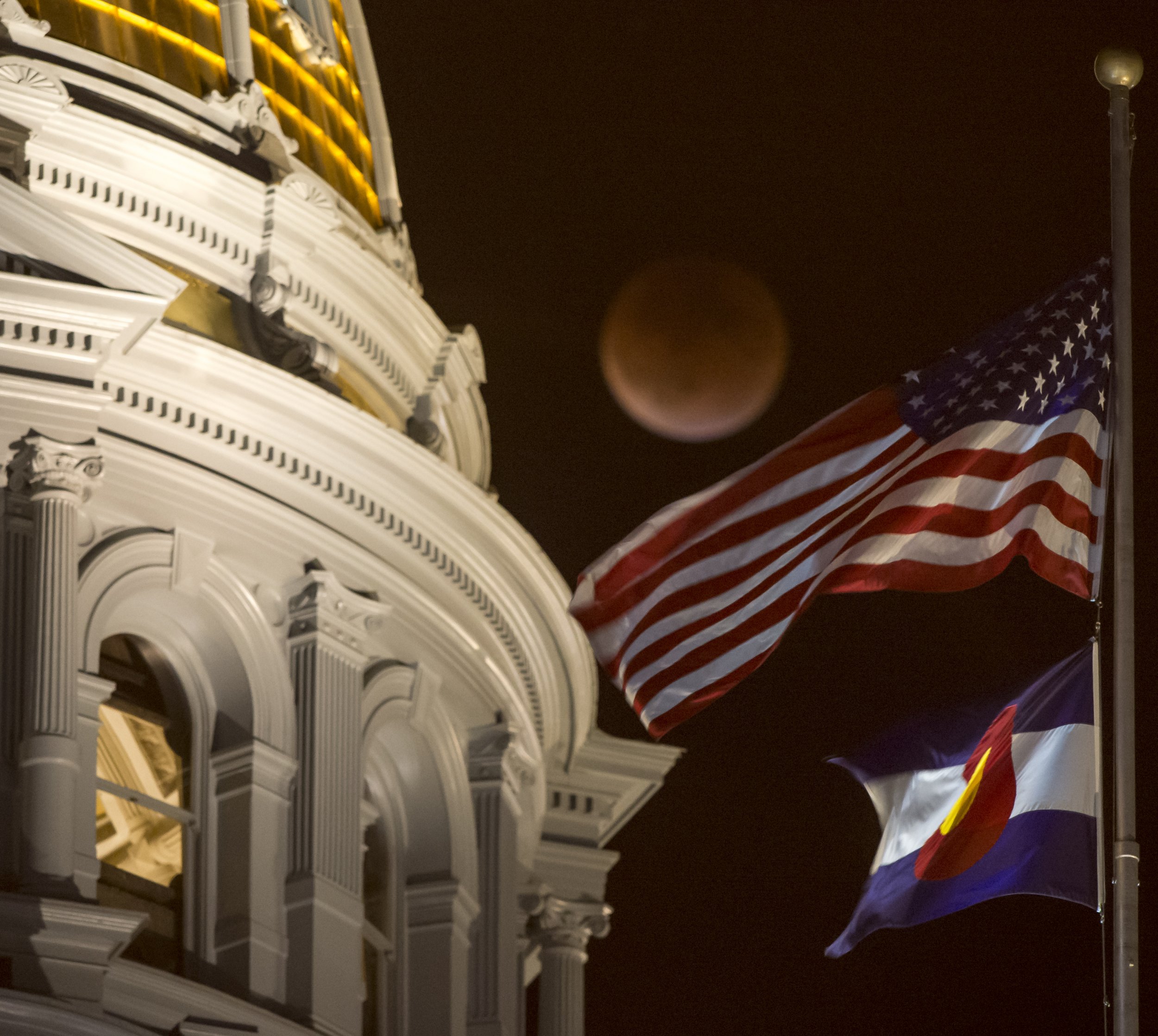
On the second anniversary of President Donald Trump's inauguration, an eclipse will bathe a "supermoon" in an orangey glow. For many sky-watchers, it's a beautiful reason to stare up at our planet's rocky neighbor. But for some conspiracy theorists, it's a sign of the end of the world.
If some fringe doomsayers are to be believed, the president could be linked to the biblical "End Times" prophecies. After all, he was born on the day of a total lunar eclipse.
Related: Super blood moon is coming—total solar eclipse and supermoon converging explained
Making the rounds online since at least December, YouTube pastor Paul Begley touts Trump as the "Blood Moon President," linking the upcoming lunar eclipse—which will take place the night of January 20-21—to chaos in America.
"Is this a sign? Is this a harbinger for America?" Begley said in a YouTube video posted Sunday. "It seems like the prophetic scriptures of the Bible are starting to play out right on the world stage, right before our very eyes."
Although the U.S. is arguably the midst of turmoil—furloughed federal workers are resorting to food banks as the government shutdown is on its 26th day—that doesn't make this outlandish online prophecy true.
Bible-inspired prophecies like Begley's often rely on passages such as Joel 2:30-31, which predicts the crucifixion of Jesus Christ. It reads: "I will show wonders in the heavens and on the earth, blood and fire and billows of smoke. The sun will be turned to darkness, and the moon to blood before the coming of the great and dreadful day of the Lord."
But this kind of prediction is vague, explained Nottingham Trent University astronomer Daniel Brown, and "can be interpreted in any kind of manner."
Orangey-red moons, for example, aren't limited to eclipses. Atmospheric conditions and dust can make the moon glow a dark orange when it sits very low on the horizon—hardly something that can be predicted hundreds of years out, like an eclipse, Brown told Newsweek.
Doomsayers use everything from earthquakes to social calamity as signs the end is upon us, Brown explained. "Dating and determining what kind of events fit the bill is always difficult and can be the source of a lot of fantasy," he added. "As an astronomer, I would comment that it is impossible to make such predictions."
He added, "It is important to remember that 'blood moon' is just another more dramatic term for what we would refer to as a lunar eclipse. Nothing more and nothing less. It doesn't take away anything of its fascination and beauty, but it is not some kind of new thing and filled with the notion of the end of the world around the corner."
The sometimes reddish glow of a lunar eclipse is caused by the bending of light by Earth's atmosphere, as the moon passes through our planet's shadow. Light is absorbed, affecting the level of blue light that reaches the moon. "A lunar eclipse can be quite poetic if you imagine standing on the moon and being able to see every sunset and sunrise on Earth at the same time," Brown said.
Beyond apocalyptic prophecies, eclipses have inspired a wide range of myths and legends throughout history.
The ancient Mesopotamians, for example, saw the moon as a symbol for their king, and an eclipse as a dangerous omen. When a lunar eclipse was predicted, the king would be replaced by a proxy for his protection. "After the eclipse had passed, the proxy king would have an unfortunate accident and disappear, replaced by the old king," Brown explained.
Some Native American tribes, he added, send healing songs to a moon they interpret as sick. For the Batammaliba, an African tribe, lunar eclipses are a time for conflict resolution—offering an example of peace to a warring sun and moon, Brown explained.
For the astronomer, lunar eclipses offer a "beautiful" example of the motions of the solar system. "Just noting the difference of curvature of the Earth's shadow on the moon shows how much larger the Earth is compared to the moon—no math involved at all."
Instead of thinking of a lunar eclipse as a "blood moon," with all its doomsday connotations, Brown recommends coming up with a name of your own. "Try and go outside and experience the full moon in all its glory. Then see if you can create your own term for the full moon as you see it."
Uncommon Knowledge
Newsweek is committed to challenging conventional wisdom and finding connections in the search for common ground.
Newsweek is committed to challenging conventional wisdom and finding connections in the search for common ground.
About the writer
Katherine Hignett is a reporter based in London. She currently covers current affairs, health and science. Prior to joining Newsweek ... Read more
To read how Newsweek uses AI as a newsroom tool, Click here.








